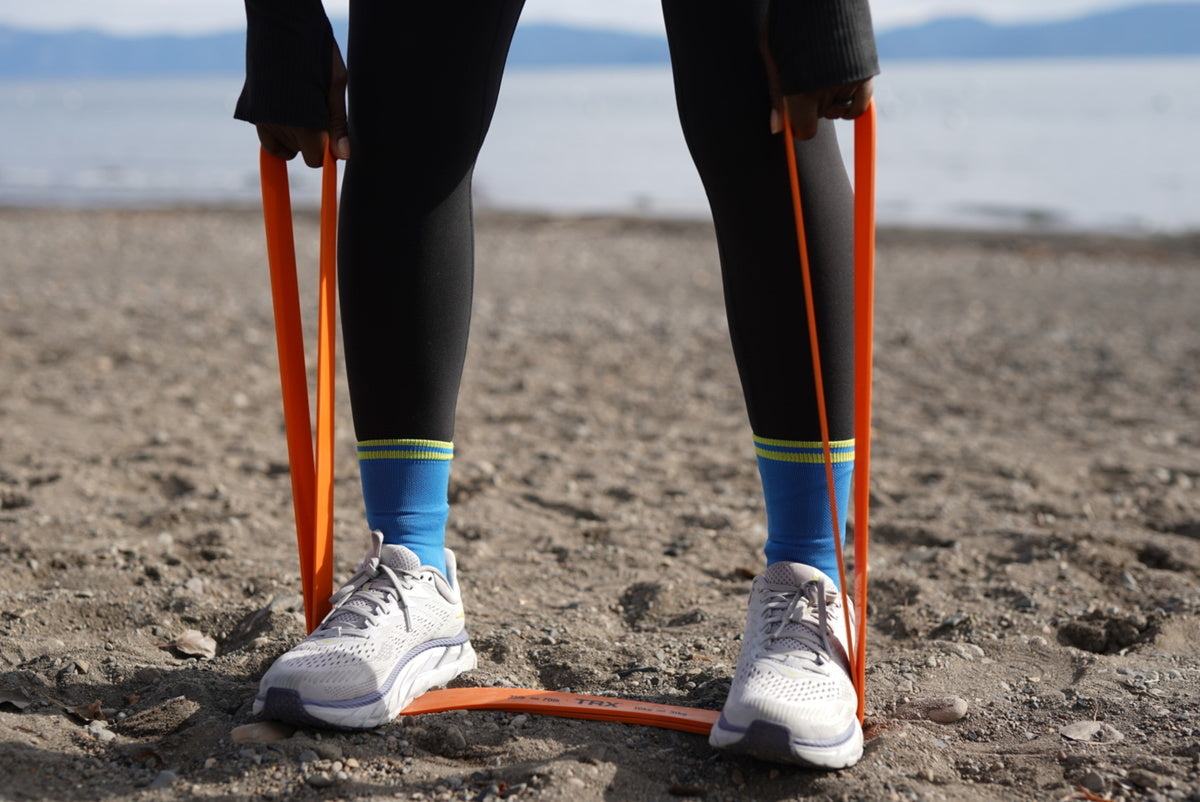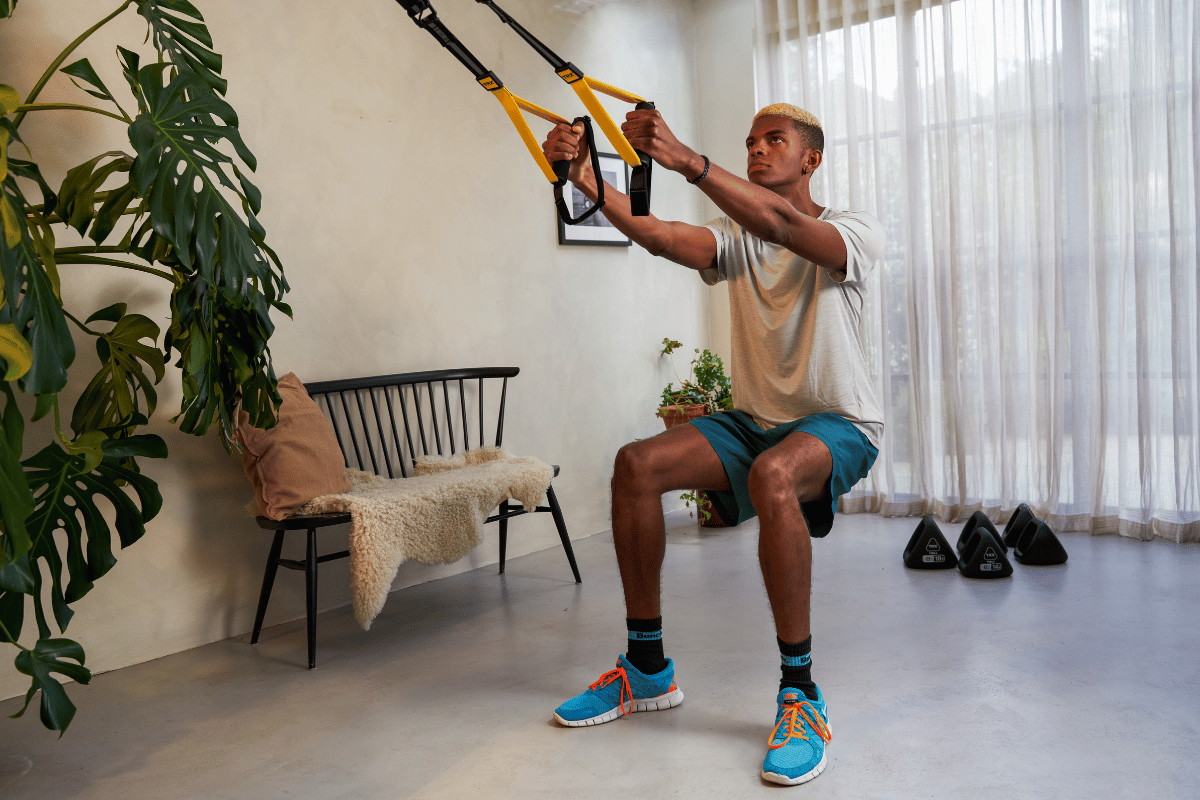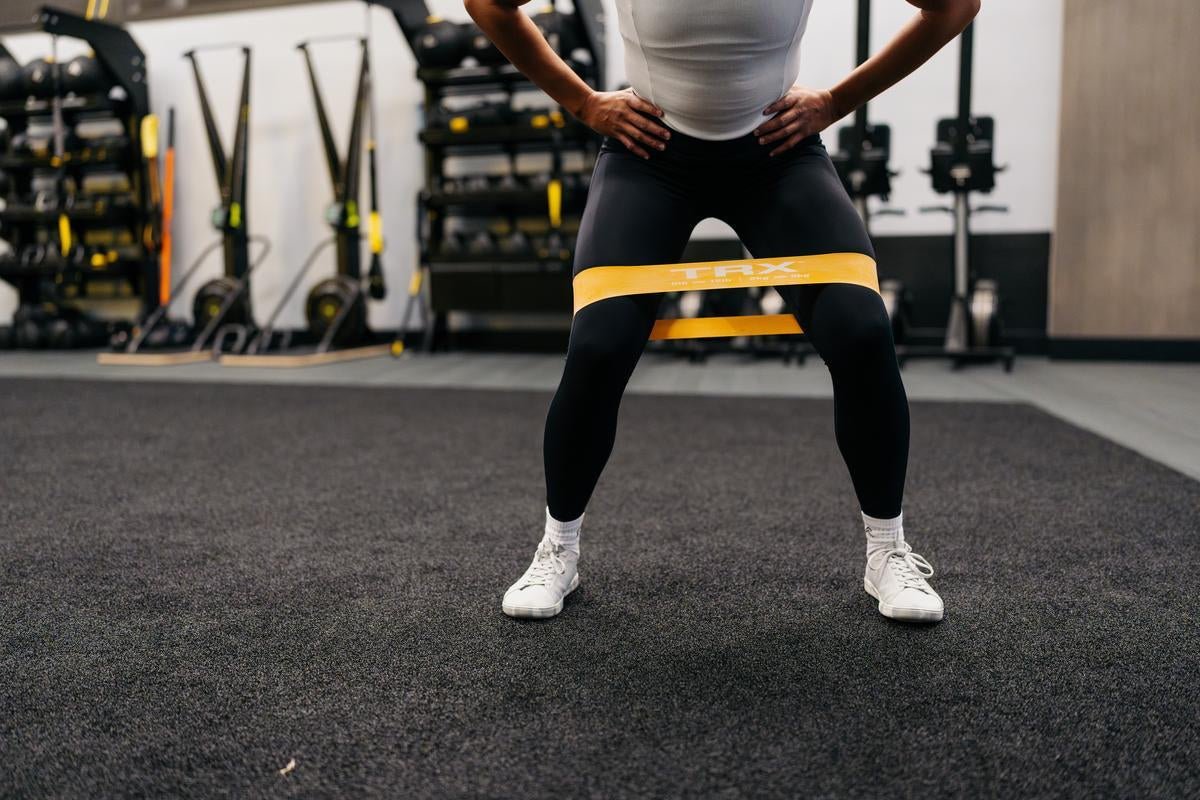Resistance band deadlifts are the perfect way to build serious muscle gains, no gym required.
These versatile bands create variable resistance that intensifies as you rise, challenging muscles differently than traditional weights.
For even more dynamic training, incorporate TRX Suspension Trainer™ to elevate your entire lower body workout.
Whether you're a beginner, working out at home, or recovering from injury, these powerful techniques adapt to your needs.
What Is a Resistance Band Deadlift?
A resistance band deadlift mimics the barbell version but swaps the heavy weights for durable bands.
These bands create progressive tension that peaks at the top of the movement, effectively targeting your glutes, hamstrings, erector spinae, and core stabilizers.
To maximize your lower body training, consider incorporating other resistance band leg exercises into your routine.
The TRX Suspension Trainer™ takes it to the next level. Adding TRX exercises to your routine not only hits the same muscle groups but also introduces new angles for a more comprehensive posterior chain workout.
Plus, the TRX challenges your core to maintain stability throughout each rep, making your workout more dynamic.
How to Perform a Basic Resistance Band Deadlift
Doing a deadlift with a resistance band isn't hard. Once you understand how to use resistance bands properly, just grab your exercise/workout band and follow the instructions below.
Step-by-Step Instructions
Master the fundamentals with this simple progression. Follow these five key steps to ensure proper form and maximum muscle engagement:
-
Set Up: Lay the band flat on the ground. Stand in the middle with feet hip-width apart, keeping both feet securely on the band.
-
Grip: Bend down and grab both ends of the band. Adjust your grip – closer to the ends for more resistance, higher up for less.
-
Form: Keep your back flat, chest lifted, and core engaged. Push your hips back, bending your knees slightly.
-
Lift: Drive through your heels, engage your glutes, and rise to a standing position. Keep the band close to your legs.
-
Lower: Slowly reverse the movement, controlling the band as you lower back down.
Try Including These Deadlift Variations with TRX Training
Ready to take your deadlifts to the next level? These variations target different muscle groups and movement patterns to create a well-rounded lower body workout:
-
YBell™ Romanian Deadlift: Adds weight and grip challenge. Push hips back while keeping legs almost straight and back flat.
-
Resistance Band Sumo Deadlift: Use a wider stance with toes pointing outward to shift the emphasis to inner thighs and glutes. This variation pairs perfectly with resistance band squats for a complete lower body session.
-
TRX Rip Trainer™ Rotational Deadlift: Incorporates rotational strength and stability, engaging the entire core while building functional strength.
-
TRX Single-Leg Deadlift: Target imbalances by working one leg at a time. Hold TRX handles, balance on one leg, hinge forward, then rise using glutes and hamstrings.
Related: 11 Hamstring Exercises You Can Do at Home + Sample Workout
Sample Full-Body Workout Using Resistance Bands and TRX Equipment
This circuit combines push and pull exercises for balanced muscle development. Perform 3 sets of 12-15 reps for each exercise, resting 30 seconds between exercises and 1-2 minutes between sets:
-
Resistance Band Deadlifts
-
Resistance Band Lunges
-
Resistance Band Squats
-
TRX Core Rotations
-
TRX Single Leg Lunge
To progress, adjust the band's tension, increase reps, or incorporate single-leg and rotational variations using TRX.
Exploring different resistance band exercises can help you discover new ways to challenge your muscles and break through plateaus.
Benefits of Resistance-Based Deadlifts
Resistance bands deliver progressive tension that maximizes muscle engagement without the joint strain of traditional weights. Understanding everything you need to know about resistance bands can help you optimize their use in your training. TRX enhances this by integrating core stabilization, balance training, and functional movement. Together, they create a joint-friendly, portable training system that can be done anywhere – whether you're at home, in the park, or on the go.
TRX equipment like the YBell™ and Rip Trainer™ further increase the intensity by adding resistance and rotational elements. These tools not only amplify your deadlift training but also keep your workouts fresh and challenging as you progress.
Equipment Options for Resistance Deadlifts
Building your home gym doesn't require heavy investments. Here are the essential tools you'll need to get started with resistance-based deadlifts:
-
Long-loop resistance bands (5-15 lbs, 15-30 lbs, 30+ lbs)
-
TRX YBell™ for added weight
-
TRX Rip Trainer™ for rotational deadlifts
Each tool provides a unique challenge. The YBell™ works like a kettlebell, dumbbell, and push-up stand all in one, while the Rip Trainer™ adds rotational resistance for full-body conditioning.
Level Up Your Deadlift Game with Bands
You don't need a barbell to master the deadlift. With resistance bands and TRX equipment, you can build strength, enhance core stability, and train effectively anywhere. Incorporate these powerful training tools into your routine to transform your lower body workouts and push past plateaus – no gym required. Ready to get started? Let's move!



